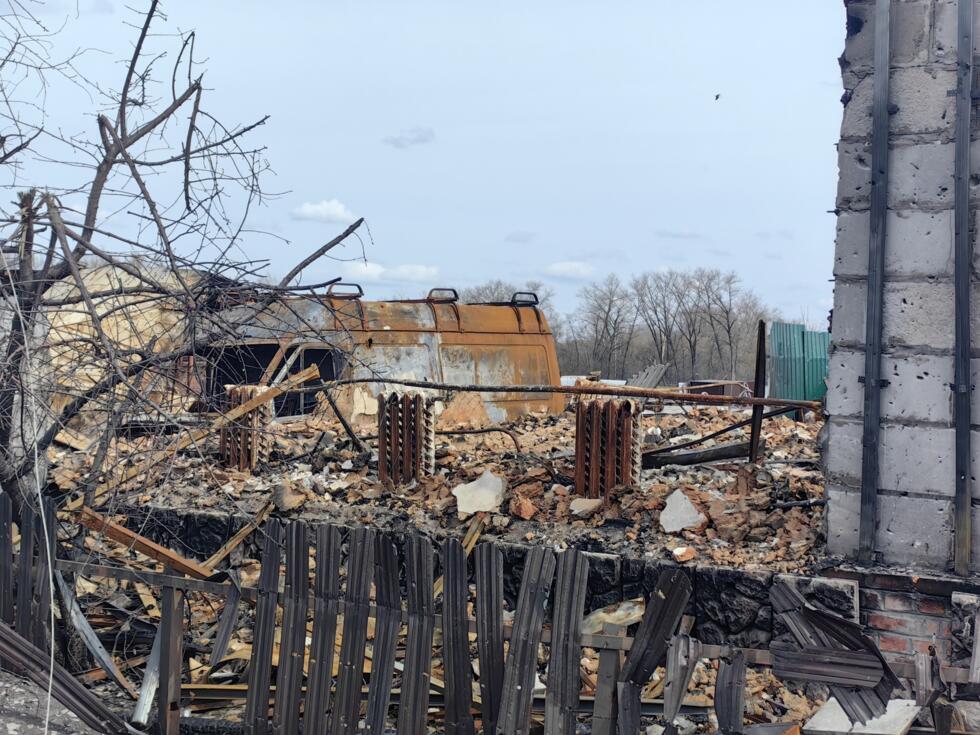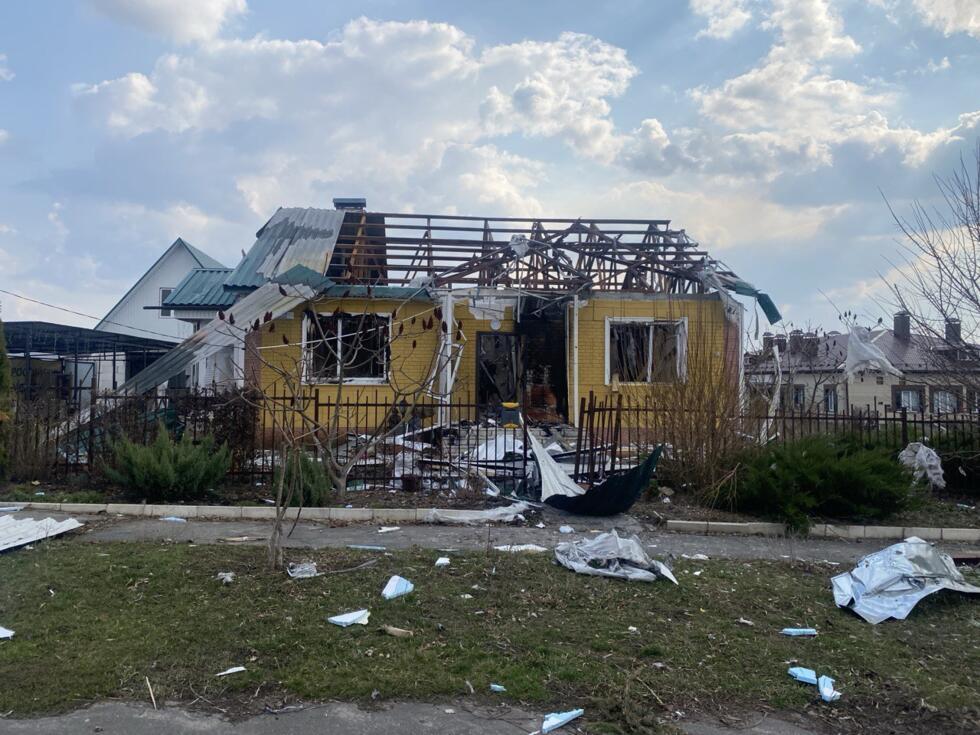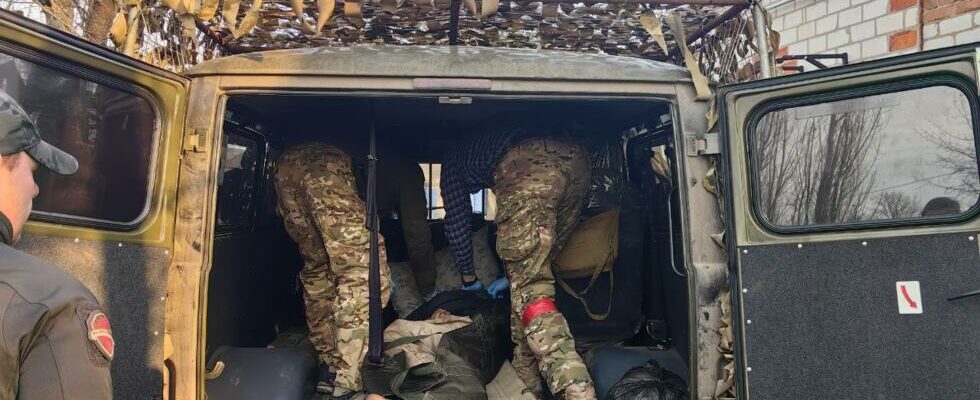The rural locality as well as most of the territory of the Koursk region were reconquered by a lightning counter-offensive of the soldiers of Moscow, launched just over 7 months after the spectacular incursion of the Ukrainian army in Russian territory. The villages have taken on ghosts and the threat of drones is permanent.
From our special envoy to Soudja, Anissa El Jabri (with Anna Chargatova for production)
“Today is a good day to work almost quietly. As there is a wind Very strong, drones enemies cannot fly as fast and as usual as usual, and they need more time to aim and shoot. And as it is also a very clear day, for us, it is also easier to see them coming and to shoot them ”.
At the wheel of the car, the Imam of Koursk, who joined the Russian forces of the Chechen Group Akhmat, knows the journey by heart: in cooperation with the local authorities, these troops are on the road every day to feed the rare civilians still present on the spot, evacuate those who wish or whose state requires it. Imam Issa remains concentrated. Moscow soldiers have resumed position on their land, but each route on this road still prohibited for civilians remains dangerous. On the side, some corpses of cows or pigs, calcined military vehicles; In the impressive fields, anti-tank mines, deposited “March 8, to block any movement of the Ukrainian army”, said Issa. “Very intense fights raged, drones flew, and everything that moved exploded at the same time. Many vehicles have been affected. Now, dedicated services remove everything as we can circulate. ”
The threat in the sky remains permanent. Like all vehicles traveling on this Koursk route to Sudja, the one drives that day is equipped with a drone detector.
In the car, the alarm which signals the approach of one of these devices is suddenly very insistent. Special cartridges in shoulder and anti-drone rifles at all times, Islam explains: “There, the detector is reporting to us that we are observed from the sky, that a drone is getting closer. At this point, it is probably about one or two kilometers from us. It is a very dangerous distance. The drones are fast, it has been spotted which can fly up to a speed of 140 km-hour. But it may not necessarily be an attack machine, but perhaps just a recognition drone. These go much slower. »»
A spokesperson for “Spetsnaz”, the Chechen special forces, presenting himself with his code name “Dior”, adds: “To shoot them down, hunting rifles are often used, But we also have a scrambling system. Drones fly on different frequencies depending on the model. There are a very large number, very different by size and technique. Some carry very large loads over very long distances. Those with fiber optics have appeared more recently and are particularly difficult to counter. ”
The beep ends up going out … the tension by descend. A few kilometers from Soudja suddenly appear on the sides of the road to immense wooden pillars and men who are busy placing others. Imam Issa deciphers the maneuver: “They started that is literally barely two or three days. They install wooden posts, a net between both sides and completely cover the road. It will look like a corridor entirely closed from above, so that a drone cannot cross it. Of course, a machine can always drop a load and tear the net, but it remains a help, I would say 70 % of the time. It still saves lives ”.
The process was already spotted last month in Donbass, on the strategic road between Bakhmout and Chassiv Yar, in the Donetsk region. According to observers, this tunnel extends over about two kilometers, unheard of over such length. It would more precisely aim to protect Russian troops from FPV drones launched by the Ukrainian army.
Sudja, before the war and the Ukrainian incursion, was a quiet town of just over 5,000 inhabitants, a hundred kilometers from the city of Koursk, capital of the eponymous region. A city turned to the food industry, with a dairy, a slaughterhouse, a meat processing plant.
Today, the traces of the fighting are visible on every street corner. Case of land to block the passage of vehicles, bombing craters which can reach several tens of centimeters in diameter. Some soldiers’ bodies. The bridges of the refueling roads are destroyed: in town, they are now crossed on foot, on makeshift barriers intertwined above the water. In places, the smell of burned burnt buildings still takes in the throat and it is sometimes necessary to force the imagination to realize that under a pile of rubble and sheets was a house. The number of buildings spared by the violence of the clashes seems tiny.

Periodically, the sound of the fighting which is still taking place several kilometers is more precise and stronger. In quads, mopeds, trucks, or simply at a run, we meet in the streets of infantry soldiers. On the walls of the dwellings, there are graffiti insulting the Russian authorities, others to the glory of the Ukrainian army, without it being possible to verify independently which has traced them and when. There are also traces on the central square of the city, very damaged, with its statue of Lenin, traditional in the Russian cities, almost destroyed.
Imam Issa does not imagine the city again becomes livable before at least a year.
In the surrounding villages, the same scenes. Deserted, almost ghostly streets, bikes abandoned in the street, machine -gunned portals that suggest lawns decorated with garden dwarfs, destroyed roofs. The older ones cling to the least damaged houses are a handful. The rescuers knock on their door to verify that they are fed and sometimes show them videos of their loved ones asking them to join them, safe, inside the land.
In the village of Kazatchkaya Loknaya, Nina, 87 -year -old Babouchka, is still cut off from the world, but survives with the electricity of the generator installed by the soldiers “I’m alone hereshe says, sitting in her living room. Before the attack, I had my children and my great grandchildren. When they learned that the Ukrainians arrived, they took the little ones and left. My son came to pick me up. I said to him: Sasha, I’m not going anywhere. I will stay at home until the end. I don’t care. It was August 7 … And now it’s been almost eight months. The Ukrainians nourished me, even brought me medication … And now, the Akhmat forces are there to do so. Otherwise, I’m all alone in the middle of nowhere. Anyway, why should I go wandering elsewhere in Russia? No one has mistreated me, no one has hurt me since the first day ». Nina nevertheless cries at the evocation of bombings, which she describes as “” Very intense, very frightening, my house trembled all the time for seven months ”. Without information, without network where she lives, Nina discovers that talks on a ceasefire and a possible end of conflict began. “I wish so much, so much, so much that there is a truce”, she said then. “Everyone suffers. Young people and old people … But youth … I pity you so much youth. ”

